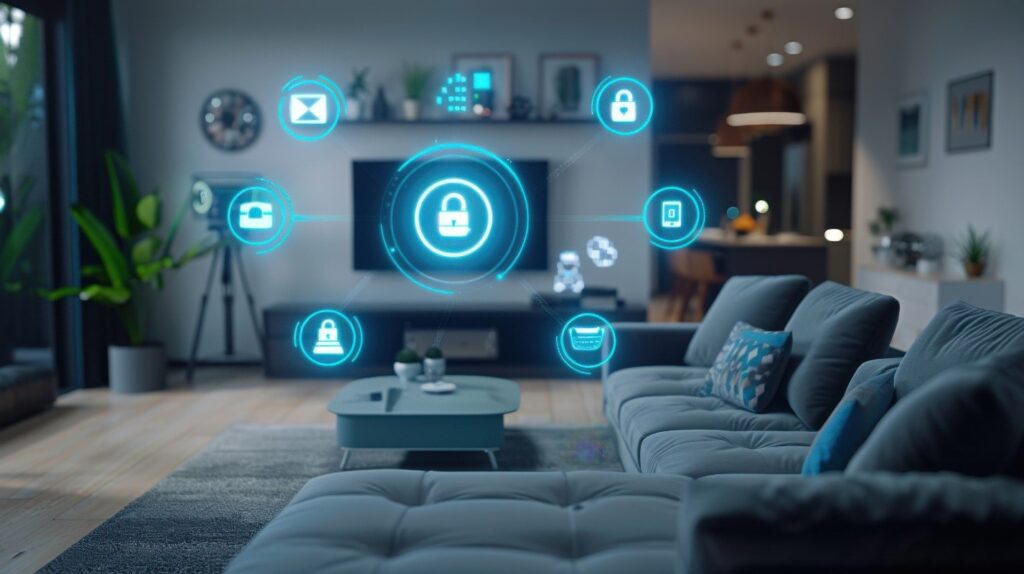5 Essential Tech Tips for Cybersecure Indiana Homes


Mike Kauffman
Vice President, Information Technology, Comcast Central DivisionOctober brings fall weather, pumpkin spice, and frights with Halloween around the corner. Ghosts and goblins can be spooky, but what can actually be scary for adults and kids alike are cybersecurity ghouls haunting log-ins or ‘please click me’ spam. This October let’s take a moment to recognize National Cybersecurity Awareness Month by assessing your home computer’s security. With the increasing number of cyber threats, it’s crucial to take proactive steps to protect your personal information and devices. As an Information Technology leader at Comcast, I’ve compiled a list of five essential tips that I take to keep my home Internet and devices safe.
1. Keep Your Software Updated
Not only is this easy and can be done year-round, but it is also one of the most effective ways to protect your devices to ensure that your operating system, web browser, and antivirus software are always up to date. Regular updates often include security patches that address vulnerabilities that hackers may exploit, and if your device offers automatic updates for apps, turn on this feature.

2. Use Complex, Unique Passwords
A strong password is a crucial line of defense against unauthorized access. Avoid using easily guessable information like birthdays or pet names. Instead, create complex passwords or phrases that combine uppercase and lowercase letters, numbers, and symbols. Consider using a password manager to securely store and generate strong passwords for different accounts. Also activate multi-factor authentication (MFA) to further protect yourself against hacks when a website or app offers it. Did you know that Xfinity offers two-step verification to help protect online access to your account, Xfinity web pages and most apps? Find out more info about two-step verification for signing in and Xfinity app setup.
3. Be Wary of Phishing Attempts
Phishing is a common tactic used by cybercriminals to trick individuals into revealing passwords and personal information. Be cautious of unsolicited emails, texts, or calls that ask for sensitive details. Never click on suspicious links or attachments and be wary of websites that look too good to be true. It is important to verify the authenticity of emails and websites. Even though the sending party might look legitimate, there is a possibility that they might not be. Be sure to examine the sender’s email address and verify that it is official.

4. Protect Your WiFi Network
Your home WiFi network is a potential entry point for hackers. To protect your network, use a strong password, enable WPA3 encryption, and regularly update your router’s firmware. Avoid sharing your WiFi password with unauthorized individuals.
5. Back Up Your Files Regularly
Even with the best security measures in place, there’s always a risk of data loss due to hardware failure, malware infections, or other unforeseen events. Create a backup frequency, daily, weekly, or monthly, so that you are regularly backing up your important files, pictures, and documents to an external hard drive, cloud storage, or other secure location.
Did you know?
- It’s estimated that one cybercrime occurs every 39 seconds in 2021 as reported by Cybercrime Magazine.
- Social media scams have resulted in $2.7 billion in losses since 2021 per Federal Trade Commission.
- In 2022, the Federal Trade Commission received more than 1.1 million reports of identity theft shared by U.S. News.
- Norton reports that more than 80% of confirmed breaches are related to stolen, weak or reused passwords.

Additional Tips for Remote Workers
If you work remotely, it’s essential to take extra precautions to protect your work devices. Ensure that your company’s security policies are followed and keep your software and antivirus software up to date. Use a virtual private network (VPN) to encrypt your internet traffic when connecting to your company’s network.
Mobile Security Matters
In today’s mobile-centric world, it’s equally important to protect your smartphone or tablet. Use a strong password or biometric authentication to lock your device. Download apps only from reputable sources and be cautious about granting apps excessive permissions. Keep your mobile operating system and apps updated and consider using a mobile security app to protect against malware and theft. For those who want to keep their devices safe and secure both at home and on the go – Xfinity’s Advanced Security on the go, for xFi Complete customers, provides safe browsing and data protection to your mobile device whenever you’re connected to an unsecured WiFi network away from home.

Comcast is committed to keeping consumers up to date on Internet security breaking news. Everyone, customers or non-customers, can visit internetsecurity.xfinity.com to see the latest updates, and you can learn more about Common Phone Scams and How to Protect Yourself. Additionally, the Xfinity Community Forum is a great resource to search for cybersecurity concerns and trends as crowdsourced by customers.

By following these tips and staying informed about the latest cybersecurity threats, you can significantly reduce your risk of falling victim to cyberattacks. Remember, staying secure and safe is an ongoing process and continued learning to stay ahead of the criminals is vital in staying cyber aware.